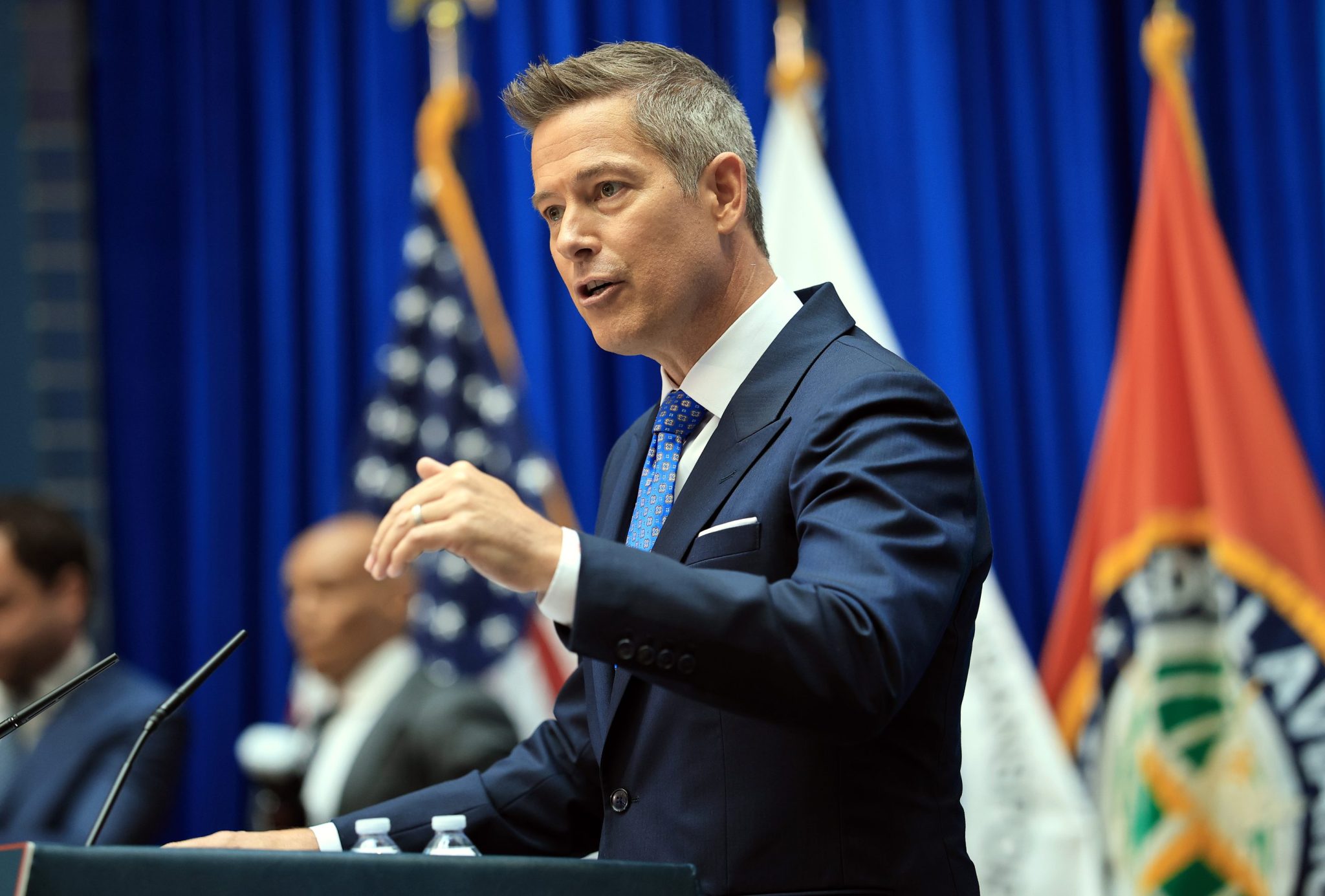- A series of radar outages at Newark Liberty International Airport have sparked concern over the reliability of air traffic control technology. Transportation Secretary Sean Duffy told NBC the FAA uses equipment up to 50 years old and purchases some spare parts from eBay. The White House announced last week a multibillion-dollar plan to update air traffic control facilities.
The Federal Aviation Administration is operating with equipment so old it’s purchasing spare parts from eBay, according to Transportation Secretary Sean Duffy.
Amid a series of technology malfunctions at Newark Liberty International Airport, Duffy has warned the current air traffic control system relies on outdated technology that’s endangered the reliability of air travel.
“I’m concerned about the whole airspace right now,” Duffy told NBC’s Meet the Press in an interview aired on Sunday. “The equipment that we use, much of it, we can’t buy parts for new; we have to go on eBay and buy parts if one part goes down. You’re dealing with really old equipment.”
Newark airport experienced its second radar outage in as many weeks on Friday morning, when a radar at a Philadelphia facility responsible for directing planes out of the New Jersey airport went black for 90 seconds. A similar outage occurred on April 28. The repeated outages have resulted in at least 73 delays and 82 cancellations at the airport on Monday alone, according to FlightAware data, and Duffy expects several weeks of reduced flight capacity at the airport.
Democratic Rep. Josh Gottheimer of New Jersey blamed the technology failures on outdated infrastructure and the lack of air traffic controllers at the airport. He said that there were about 20 controllers working, while there should be triple the amount of personnel.
An FAA spokesperson referred Fortune to a statement on its website confirming delays “due to runway construction at Newark and staffing and technology issues at Philadelphia TRACON, which guides aircraft in and out of the airport.” But the spokesperson didn’t address questions about what parts it has ordered on eBay and the process used to verify the safety of those parts.
“This is concerning,” Duffy said on Sunday. “Is it safe? Yes, we have redundancies, multiple redundancies, in place to keep you safe when you fly, but we should also recognize we’re seeing stress on an old network, and it’s time to fix it.”
Outmoded technology
While Duffy strongly maintained that air travel was the safest form of transportation, he said the Federal Aviation Administration is lacking a modern air traffic system, working with equipment that is 25—or sometimes 50—years old, and uses copper, not fiber, cables.
More than 35% of the FAA’s 138 air traffic control systems were deemed unsustainable, according to a 2024 Government Accountability Office report, meaning there’s a lack of funding and replacements needed to modernize the equipment.
The report also highlighted several unnamed systems critical to safety and operations that are 20 to 30 years old, with some up to 50 years old. Timetables for reinvestment in the systems won’t occur until 2030 at the earliest, if at all.
The aviation regulator still uses computers that rely on Windows 95 and floppy disks, Nick Daniels, president of the National Air Traffic Controllers Association, told CNBC in March.
Addressing a half-century of FAA troubles
Last week, President Donald Trump’s administration announced a more than $12.5 billion plan to revamp the U.S. air traffic control system by building six new control centers and upgrading all air traffic facilities over the next three or four years.
Duffy will also tackle a shortage of 3,000 air traffic controllers by increasing the age of retirement from 56 to 61, as well as provide bonuses to long-time employees.
“These are not overnight fixes,” Duffy said. “But as we go up—one, two years, older guys on the job, younger guys coming in, men and women—we can make up that 3,000-person difference.”
In order to replenish the air traffic control workforce, Duffy will have to reverse a nearly 45-year-old shortage sparked by President Ronald Reagan in 1981, when he fired 11,000 air traffic controllers belonging to the Professional Air Traffic Controllers Organization (PATCO) after they went on strike. The union was decertified three years later, with the National Air Traffic Controllers Association forming as a result.
While Reagan banned PATCO employees from being rehired by the FAA, President Bill Clinton lifted the ban in 1993, and by 2006, the FAA had rehired about 850 PATCO employees. Still, the FAA never returned to its pre-strike air traffic controller numbers. About 16,200 air traffic controllers worked for the FAA prior to the strike, and today, the FAA employs 14,000 air traffic controllers.
The Trump administration has conducted personnel changes that have exacerbated safety concerns, according to the Professional Aviation Specialists Association. The Department of Government Efficiency in February fired about 400 FAA employees, including radar, landing, and navigational aid maintenance experts, the union said.
“All of these people are part of the safety net,” David Spero, president of the union, which represents 130 of the 400 fired air traffic controllers, told the Associated Press at the time. “The more of them that are not there, the more difficult it becomes to do the actual safety oversight.”
The employees were rehired a month later.
Duffy denied that the firings and rehirings caused chaos within the FAA and said at no point did DOGE leader Elon Musk tell Duffy to fire air traffic controllers, despite reports to the contrary.
“We went back and forth, and Elon agreed, the president agreed,” Duffy said. “Of course, you want to keep air traffic controllers. We’re trying to hire more of them.”
This story was originally featured on Fortune.com

